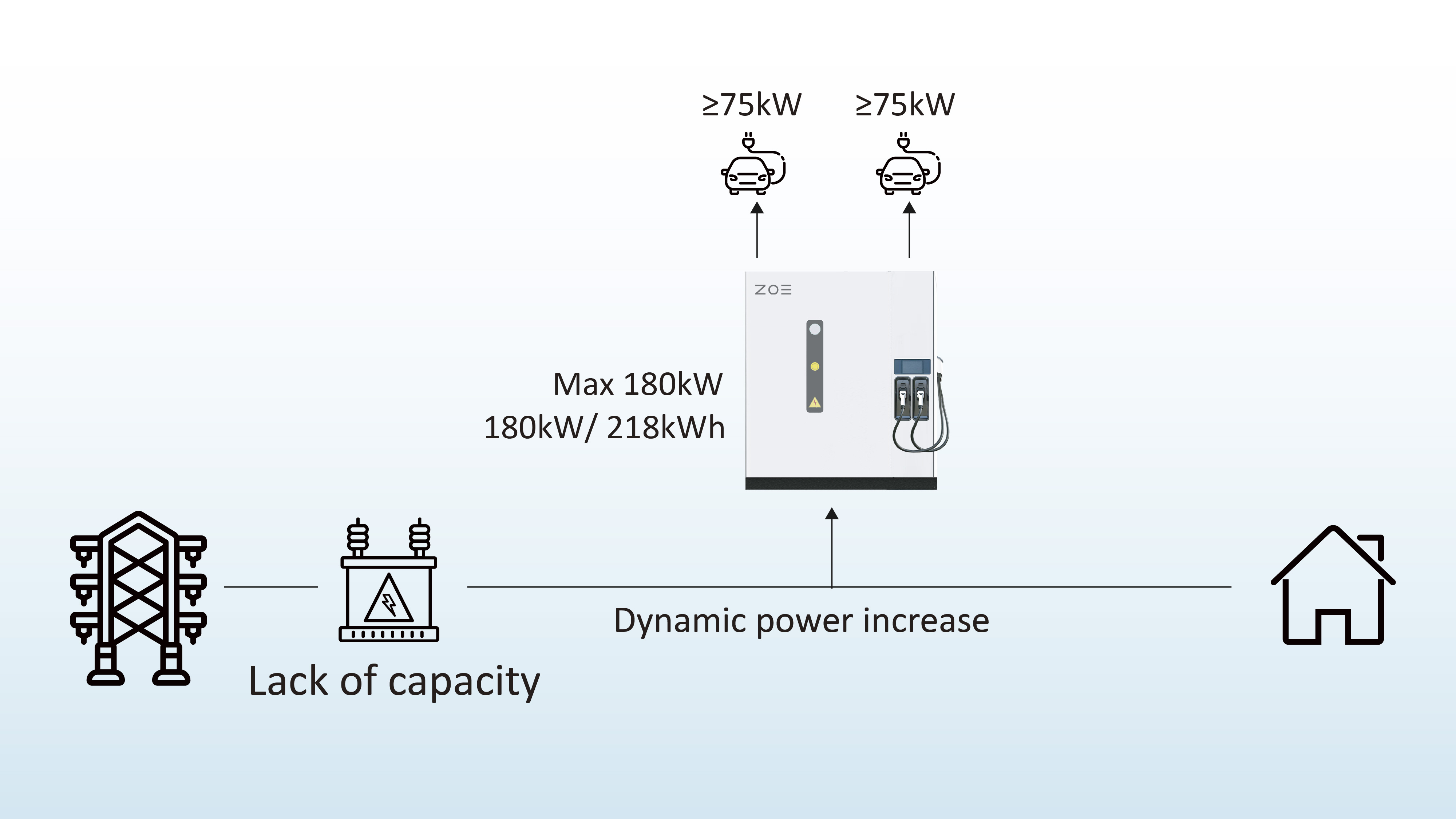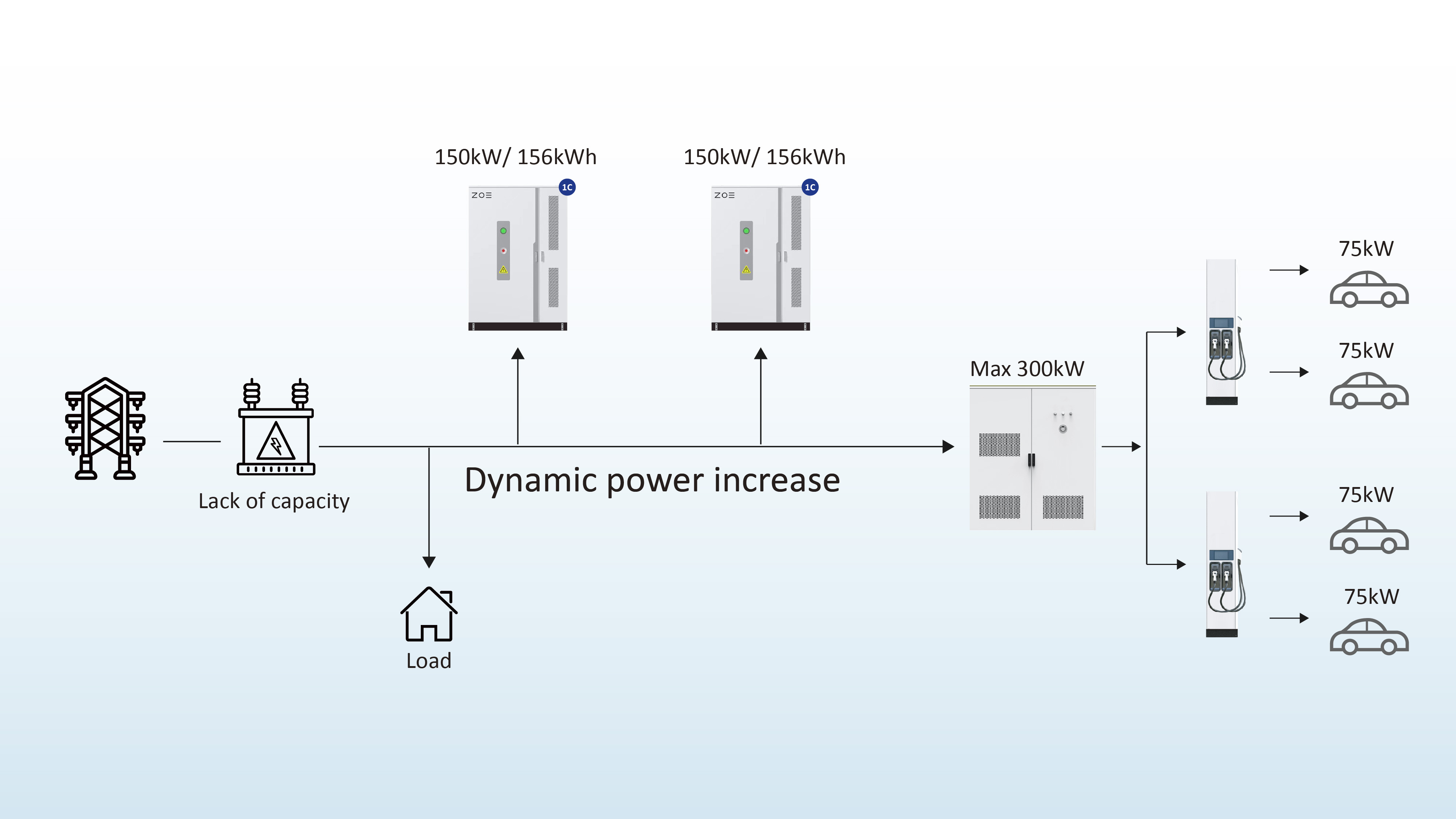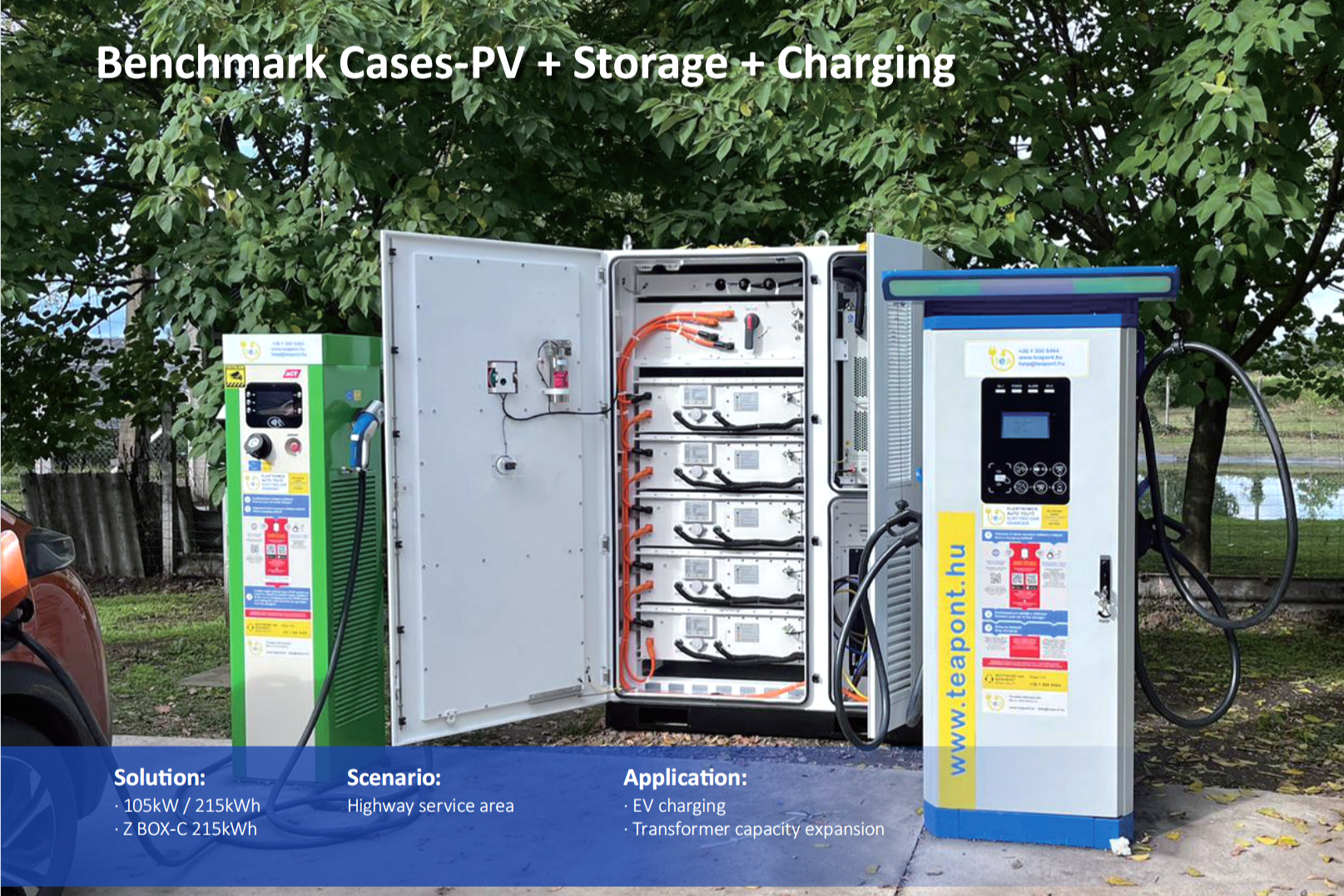2024-12-03
As the demand for EV chargers grows, some businesses face a common challenge: insufficient transformer capacity to handle the additional load. Upgrading transformers can be expensive, time-intensive, and require complex approvals. Energy storage systems offer a practical solution. By integrating energy storage, existing transformers can effectively expand their capacity, enabling the installation of EV chargers without the need for expensive upgrades or lengthy administrative procedures. Here's how this works in a specific case study.
Energy storage systems can provide extra power support during peak demand periods for users planning to install EV chargers. Acting as a grid-connected power source, these systems coordinate with existing infrastructure to reduce peak loads, ease transformer stress, and improve overall distribution efficiency.
Assume a user has a transformer with a capacity of 1000kVA, a stable load of 700kW, and a power factor of 0.9 on the low-voltage side. The dynamic load fluctuates by 20% of the stable load. During off-peak periods, the transformer operates at 30% load. With the addition of EV chargers, an extra load of 300kW is required.
|
User Load and Transformer Details |
||||
|
Transformer Capacity |
Stable Load |
Power Factor |
Dynamic Load Variation |
Expansion Need |
|
1000kVA |
700kW |
0.9 |
20% |
300kW |
1. Capacity Demand Before Expansion

2. Capacity Demand After Expansion

According to the calculation in (2), the transformer’s maximum capacity demand after the additional load reaches 1266.7kVA, which exceeds the rated capacity of the existing transformer. This would require an upgrade to a larger-capacity transformer, involving not only significant upgrade costs but also higher future electricity expenses.
If an energy storage system is deployed with a discharge capacity of 500kW and a power factor of 0.9 during high transformer load periods, the following results are obtained:
3. Capacity Demand After Energy Storage Deployment

According to the calculation in (3), with the energy storage system in place, the transformer’s maximum capacity demand is reduced to 711.1kVA, staying within its rated capacity of 1000kVA. This avoids the need for transformer upgrades and reduces associated costs.
Core Advantages of Energy Storage
1. Peak Shaving and Valley Filling:
· Reduces power demand during peak periods to prevent transformer overload.
· Ensures stable power supply without additional strain on infrastructure.
2. Lower Investment Costs:
· Eliminates the need for upgrading to larger transformers.
· Reduces upfront expenses for equipment and system modifications.
3. Electricity Cost Savings:
· Lowers demand charges and optimizes electricity tariffs.
· Minimizes long-term operational costs for enterprises.
4. Flexible Scalability:
· Easily upgrades storage capacity to meet future power demands.
· Adapts to evolving energy needs without major infrastructure changes.
ZOE Energy Storage Solutions for Charging
ZOE Energy Storage has developed a variety of charging and storage solutions tailored for industrial and commercial users. Through a reliable and efficient energy management system, these solutions address diverse requirements in different charging and storage scenarios.
Solution 1: Integrated Storage and Charging System (180kW/218kWh)
This system seamlessly integrates charging and storage, making it an ideal choice for scenarios requiring compact deployment and efficient collaboration.

Solution 2: Modular Storage and Charging System (150kW/156kWh)
Designed for flexible configurations, this solution allows independent deployment of storage units and charging terminals based on site conditions. Its higher charge and discharge efficiency makes it particularly suitable for sites with fluctuating power demands or multiple usage scenarios, improving power management efficiency.

Solution 3: Modular High-Flexibility System (105kW/215kWh)
This solution strikes a balance between capacity and flexibility, offering longer storage durations with higher cost-effectiveness. It is an ideal combination of scalability and stability for expanding large-scale charging infrastructure.

ZOE Energy Storage Case Study
On October, 2024, a charging station in Cegléd, Hungary, successfully deployed ZOE' s 105kW/215kWh energy storage system. This system integrates Battery Energy Storage (BESS) and EV Charging to address the additional power demand from EV chargers, maximize the use of renewable energy, and enhance site energy management efficiency.

The energy storage system acts as an auxiliary AC power source, effectively "virtually expanding" the transformer capacity during peak demand. As a result, the transformer remains within its operational limits, meeting the increased production needs without physical upgrades. This approach highlights the cost-efficiency and scalability of integrating energy storage systems in industrial and commercial applications.


2024 ZOE All Rights Reserved. 沪ICP备2023013208号-1 BY VTHINK